Growing a basil plant is rewarding, however some gardeners may run into an unwelcome surprise- black spots appearing on the leaves. This can cause alarm and worry since these unsightly blemishes can threaten the health of our beloved herb. Thankfully, there are solutions to this common problem that don’t involve harsh chemicals or invasive treatments! To help you understand what may be behind the issue and how to combat it, let’s take a look at some basics of basil cultivation as well as why black spots might appear in the first place – then we’ll explore potential resolutions.
Is Basil Worth Growing in the Garden?
Basil is one of the most versatile and popular herbs for cooking. It adds flavor to many dishes, from pesto to salads, sauces, soups, and more. Basil can also be used in teas, oils, and even desserts. Growing your own basil gives you access to a fresh supply of leaves all season long. You can harvest the leaves as needed throughout the growing season to add an array of flavors and aromas to your meals.
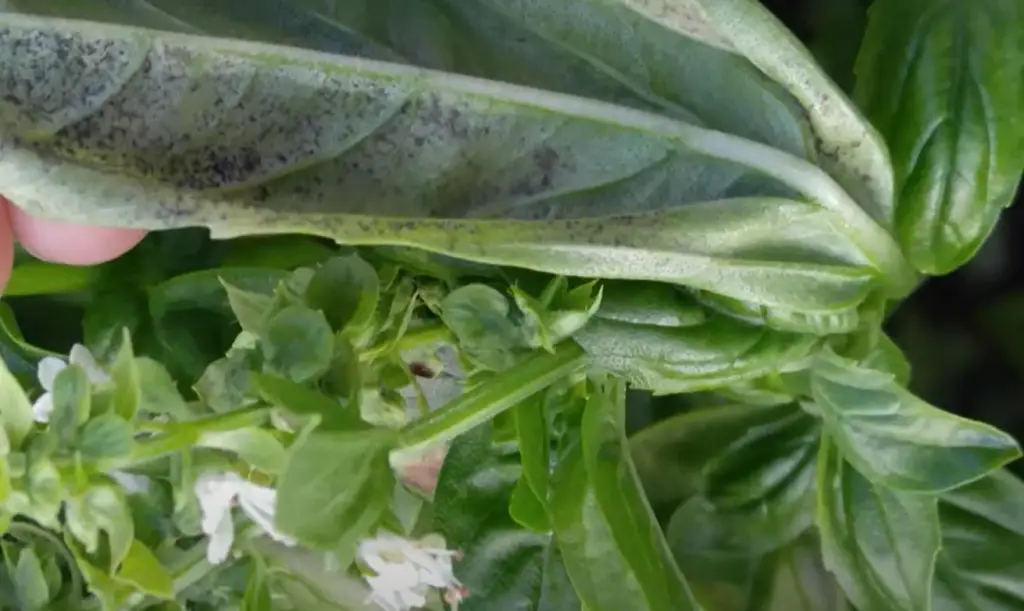
In addition to its culinary uses, basil has some medicinal properties that make it beneficial in home remedies. For example, it can help relieve bloating or indigestion after a large meal. It’s also thought to have anti-inflammatory effects which could help with sore muscles and joint pain. And, it may even help boost the immune system by providing some protection against certain illnesses. [1]
Basil is an easy herb to grow and maintain in your garden or container garden. It requires minimal care and just a few hours of direct sunlight each day. Plus, it’s relatively resistant to pests and disease, so you won’t need to use harsh chemicals on your plants.
So, if you’re looking for an easy-to-care-for herb with multiple uses in the kitchen, basil may be worth growing in your garden. [2]Is Basil Useful?
Basil is an incredibly useful herb. In fact, it has been used for centuries as a culinary and medicinal herb. Basil is a great source of vitamins A, C and K, as well as calcium and iron. It is also rich in antioxidants that can help protect the body from damage caused by free radicals. Studies suggest that basil may have anti-inflammatory properties which make it helpful for soothing various types of pain.
Some people even suggest that it may be beneficial in controlling diabetes or reducing cholesterol levels in the blood. Furthermore, its antibacterial effects make it an excellent choice to treat digestive issues such as indigestion or vomiting. Finally, some people use basil to aid with sleep disorders or stress management. As you can see, it is an incredibly useful and versatile herb that can have many benefits for your health. Try it today to see how it can help you. [3]
How to Grow Basil?
To grow basil, start by getting a packet of basil seeds or seedlings from your local garden center. Plant the seeds in a sunny spot in well-drained soil about 1/4 inch deep and keep the soil moist until the seedlings emerge. You can also start basil indoors 4-6 weeks before the last frost and then transplant it outdoors when all danger of frost has passed. Make sure to space the plants 12–18 inches apart and provide plenty of sunlight (at least 6 hours per day).

Water your basil plants regularly, keeping the soil slightly moist to ensure that they don’t dry out.
As the plants mature, prune them frequently to encourage healthy growth and bushier plants.Harvest your basil when the leaves are a vibrant green and about 3 inches long. Cut the stems just above a set of leaves near the base of the plant to encourage it to become bushier as it grows back. You can preserve any extra leaves by drying or freezing them for later use.
To ensure maximum yields, it’s important to keep an eye out for common pests such as aphids, thrips, slugs, and snails that can feed on your plants’ succulent new growth. If you notice any signs of infestation, treat immediately with organic methods like insecticidal soap or neem oil. With regular maintenance and care, your basil plants should thrive. [4]
What are the Causes of Diseases in Basil?
Basil is a very hardy plant, but it can be susceptible to certain diseases.
Overwatering
Basil is a tropical plant that doesn’t like to sit in wet soil for too long, and overwatering can cause root rot, which will eventually kill the plant.
Pests
Aphids, spider mites, whiteflies, caterpillars, and other insects can attack basil plants and cause them to become diseased or die if not treated promptly.
Poor Soil Quality
If the soil your basil is planted in has poor drainage or lacks essential nutrients like nitrogen and phosphorus, it can lead to nutrient deficiencies and disease in your plants.
Fungal Diseases
Fungal diseases such as root rot, powdery mildew, and downy mildew can lead to disease in basil.
Diseases from Planting too Closely
If you plant your basil too close together, it can restrict the airflow and create an environment that is perfect for fungal diseases to thrive.
Lack of Sunlight
Basil needs at least 8 hours of sunlight each day to stay healthy; if it doesn’t get enough sunlight, then it can suffer from a lack of nutrients or become diseased quickly.
Cold Weather Stress
If basil is exposed to temperatures below 50°F (10°C), then it can become stressed and susceptible to disease.
Over Fertilization
Too much fertilizer can lead to nutrient burn, which can cause the plant to become diseased.
Poor Pruning Practices
If your pruning practices are poor, then you could introduce disease into your basil plants by cutting the stems incorrectly or introducing diseases through your tools.
Nematodes
Root-knot nematodes can attack the roots of basil and cause them to become weak and diseased, leading to plant death if not treated quickly. [5]
Bacterial Wilt
This is a bacterial disease that affects many herbaceous plants including basil and causes wilting leaves, drooping stems, and eventual death of the plant if not addressed early on.
Southern Blight
This is a fungal disease that can attack basil plants and cause them to become stunted, deformed, or even die if not treated promptly.
Verticillium Wilt
This is a soil-borne fungal disease that can be transferred through infected soil or plant material and causes yellowing of the leaves and eventual death of the basil plant if not treated quickly.
Downy Mildew
This is a common fungal disease among herbs like basil and causes yellow spots on the leaves which eventually turn brown and lead to wilting of the plant.
Botrytis Blight
This is another fungal disease caused by damp conditions that can affect basil crops and cause lesions on the leaves, wilting, and eventual death of the plant if not treated.
Grey Mould
This is a fungal disease that can cause gray mold to form on basil plants and eventually lead to leaf drop and death of the plant.
Phytophthora Blight
This is a soil-borne fungus that can attack basil plants in wet conditions and cause them to become stunted, yellowing leaves, and eventual death if not controlled.
Pythium Root Rot
This is a fungal disease caused by overwatering or poorly drained soils which can attack basil roots leading to discoloration of the leaves and wilting of the plant if left untreated.
Alternaria Leaf Spot
This is a fungal disease caused by warm, wet conditions and can cause spots on the leaves as well as wilting and eventual death of the plant if not addressed early on.
Fusarium Wilt
This is a soil-borne fungus that attacks basil roots leading to yellowing, wilting, and even death of the plant if not treated quickly. [6]
How to Fight Basil Diseases?
Basil is a fairly disease-resistant plant, but it can be susceptible to certain fungal and bacterial diseases. To help prevent or manage these diseases, practice good sanitation when gardening or storing basil.

Remove any affected leaves from the plant and discard them in the trash. When storing basil, keep it dry and cool, as high temperatures can increase disease development. Avoid overhead watering of the plant for long periods of time and ensure that adequate air circulation is available near the plants.
If you notice signs of infection on your basil plants, spray with an appropriate fungicide or bactericide according to label directions — this will help control further spread of the disease.
Additionally, rotating crops every few years helps reduce recurrence of soil-borne diseases like verticillium wilt. For more information on basil diseases and how to manage them, contact your local cooperative extension office.
Additionally, there are a few steps you can take to help promote healthy growth of your basil plants:
- Plant in an area that receives full sun and has well-drained soil
- Water the plants deeply and infrequently (once a week or less)
- Fertilize regularly with a balanced fertilizer
- Avoid crowding the plants so that air is able to circulate between them
- Remove any weeds near the plant as they may harbor disease organisms
- Harvest promptly when flowers form and discard any affected leaves immediately. [7]
What Are the Reasons that Basil Has Spots of Black?
Basil, a member of the Lamiaceae family, is an herb commonly used to flavor savory dishes. It may also be referred to as sweet basil or Ocimum basilicum. The leaves of this plant are green and have visible spots of black on them that can range from light brown to almost black in color. These spots are known as specks or flecks, and they form when certain types of fungi grow on the foliage of the plant.
The primary cause for these speckles is believed to be due to a fungal infection called Alternaria blight which is caused by the fungus Alternaria alternata. This disease affects many plants including tomatoes, peppers, eggplant, potatoes, beans and squash but is most commonly associated with basil. The fungus thrives in warm, humid weather and can spread on the wind or from infected plants. It can also be spread by tools that are used for harvesting or handling the infected plant material.
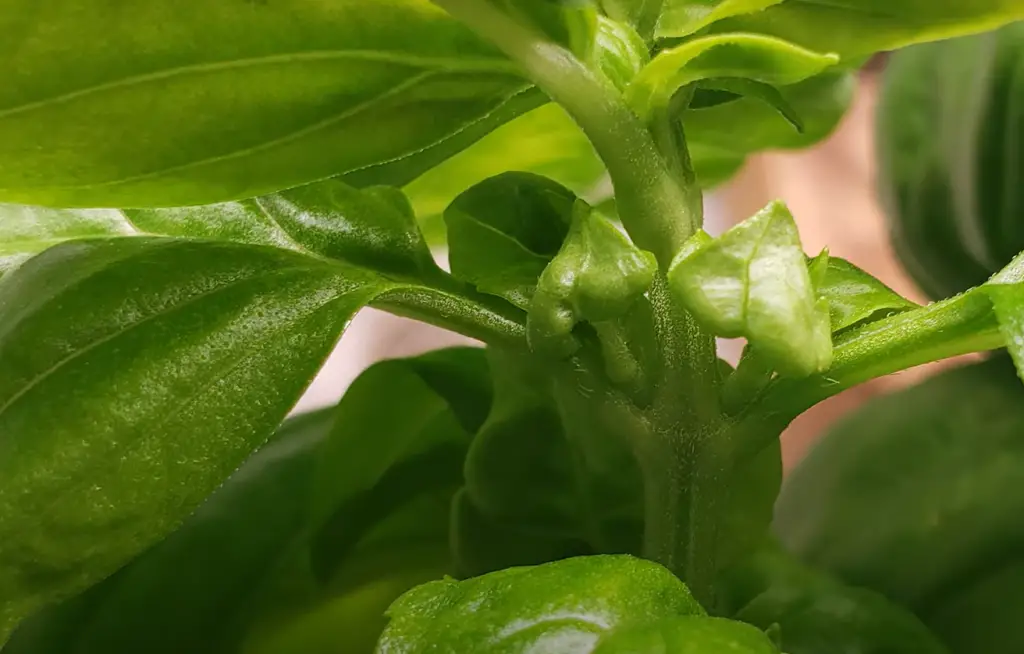
The symptoms of this disease appear as small black spots that start out very light in color but quickly become darker as the infection progresses. The leaves may also yellow and curl up, which can lead to them eventually falling off of the plant if not treated properly.
Keeping weeds away from the area will also help reduce the risk of infection from Alternaria blight. If you notice any signs of infection, it is important to remove the affected leaves and treat with appropriate fungicides. If left untreated, Alternaria blight can cause basil plants to die off. [8]How To Deal With Black Spots on Basil?
Check the Root System
Inspect the root system of the basil plant for any signs of disease or damage, such as discoloration or root rot. If you notice any abnormalities, immediately remove all infected parts and isolate them from other plants to prevent further spread of infection.
Reduce Watering
Black spots are usually caused by too much moisture accumulation around the leaves and stems, so reducing how often you water your basil plant can help reduce black spot risk.
Improve Air Circulation
Poor air circulation is another common cause of black spots on basil plants, so make sure to trim back overcrowded foliage and provide plenty of space between individual plants for good airflow.
Clean Up Debris
Fallen leaves, dead branches, and other debris can provide a breeding ground for the fungus that causes black spots.

Make sure to keep your basil garden clean and free of any debris or fallen foliage.
Use Fungicide Sprays
If you are already dealing with an outbreak of black spot, then you may need to resort to using fungicides such as neem oil or copper-based products in order to stop the spread and eliminate existing colonies. Always follow the instructions on the label when applying these treatments.
Plant Resistant Varieties
Some varieties of basil are more resistant to black spot than others, so consider planting one of these if you have recurring issues with this condition in your garden.
Avoid Over-Fertilizing
Too much nitrogen-rich fertilizer can cause leaf growth to outpace the development of the basal stems, creating ideal conditions for black spot to spread quickly. Avoid over-fertilizing and stick with a balanced product that contains both nitrogen and phosphorus or other micronutrients as well.
Sanitize Garden Tools
Make sure to wash any garden tools you use in your basil garden with soapy water or a diluted bleach solution between uses, in order to limit the chances of spreading fungus from one plant to another. [9]
What is Companion Planting and Why Stick to the Rules?
Companion planting is a gardening technique that involves strategically placing multiple plants close to each other in order to maximize their growth potential. The idea behind it is that certain plants will naturally help each other thrive. For example, tomatoes and basil are known as “companions” because they work together symbiotically, with the tomato plant providing support for the basil and both benefiting from being near one another.
Another example of companion planting is beans grown next to corn. The corn provides a natural trellis for the beans to climb on, while the beans contribute nitrogen-rich material back into the soil where the corn can benefit from it. These types of beneficial relationships occur often in nature and have been adapted by gardeners since ancient times.
The key to successful companion planting is following the rules. Most plants don’t always do well together, and it’s important to make sure to research which ones are beneficial companions before trying out different combinations in your garden. Additionally, be aware of the distances between each plant when placing them in proximity with one another. Lastly, remember that companion planting is a continuous process, so pay attention to how the plants respond over time and adjust their placements accordingly if needed.
When done correctly, companion planting can lead to a more productive and healthy garden filled with vibrant flowers and delicious vegetables. It’s an easy way for novice gardeners to get started growing their own food while also learning about natural interactions in their garden. So, take some time to research the best companion plants for your space and reap the rewards of following the rules of companion planting. [10]
Can Basil be Planted with Other Herbs?
Basil can be planted with other herbs depending on the type of herb and your preference. Planting herbs together can help to bring out their flavors, but it’s important to remember that different herbs have different preferences when it comes to soil, sunlight, and water.
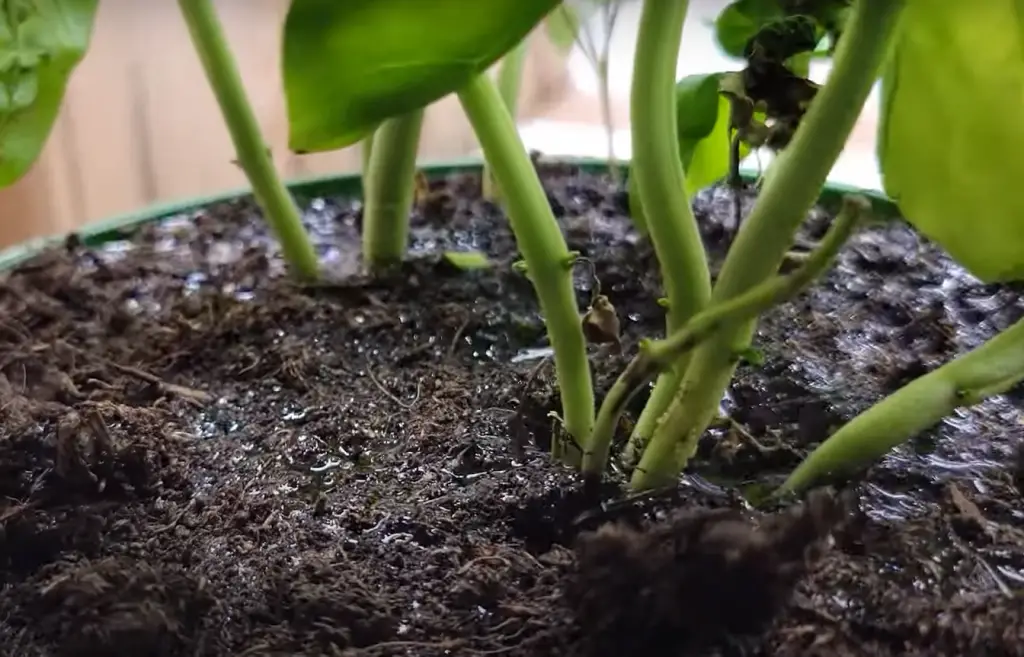
When planting basil in an herb garden, consider which herbs will complement its flavor – such as oregano, thyme, rosemary, chives and parsley. These are all easy-to-grow plants that thrive in similar climates as basil does.
Mint is known to do well alongside basil and its pungent flavor can help to bring out the unique flavors of basil.It’s important to remember not to crowd your herbs when planting, as they grow best with plenty of space between them. By following these simple tips, you should be able to create a vibrant and flavorful herb garden that includes both basil and other herbs. [11]
FAQs
Is it OK to eat basil leaves with black spots?
These spots are usually caused by fungi and can potentially cause food poisoning if consumed. If you find that a basil leaf has black spots, it is best to discard the leaf. It is important to also check any other basil leaves for signs of fungal infection before consuming them.
How do you treat bacterial leaf spot on basil plants?
It can be treated using a variety of methods. The most important step is to remove infected leaves immediately. This will help prevent the spread of the disease to other plants in your garden. Once you have removed all affected leaves and stems, apply a copper-based fungicide to areas of new growth or those still showing signs of infection. Additionally, it is important to practice proper sanitation like avoiding overhead watering and removing debris from around the plant that could harbor bacteria. Finally, rotate crops with basil each year so that bacterial leaf spot does not become established in an area of your garden.
How to fix basil fungus?
The first step in managing basil fungus is to identify the type of fungus present. Fungal diseases affecting basil plants include powdery mildew, black spot, and rust. Each of these fungi has distinct characteristics that make them easy to recognize. Once you’ve identified the type of fungus, you’ll know how best to treat it. The next step is to improve air circulation around your basil plant. If possible, move the plant away from other plants, walls or structures that may limit airflow around the leaf surfaces where fungal spores like to settle and grow.
What does diseased basil look like?
They often have yellowing or wilting leaves, discolored spots or streaks on the leaves, dark brown lesions along leaf edges and stems, and stunted growth. In severe cases, the entire plant may begin to wilt and die off. If you notice any of these signs in your basil plants, it is important to diagnose the cause quickly and take measures to treat it. This could include removing affected sections of the plant, treating with a fungicide solution, or adjusting environmental factors such as water and light levels.
Useful Video: Black Spot Basil Woes
Final Thoughts
There are many effective ways to treat basil diseases. From proper fertilization and pest management to preventive measures such as using disease-resistant varieties, you can protect your basil from disease and enjoy its pleasant aroma and flavorful taste for a long time. Also, don’t forget the importance of good soil preparation and proper watering. Feel free to experiment with different treatments and find the combination that works best for your own garden. With gardens full of fragrant herbs like basil, life becomes much more enjoyable! Take care of your plants, consider all the possible options to prevent diseases – be creative, have fun and make sure you enjoy your garden!
References:
- https://www.allaboutgardening.com/basil/
- https://wikifarmer.com/basil-in-pots-basil-in-the-garden-everything-you-need-to-know/
- https://www.webmd.com/diet/health-benefits-basil
- https://www.almanac.com/plant/basil
- https://www.gardeningknowhow.com/edible/herbs/basil/basil-diseases.htm
- https://growables.com/informationVeg/BasilDiseases.htm
- https://krishijagran.com/agripedia/major-pests-diseases-of-basil-and-ways-to-control-it/
- https://www.evergreenseeds.com/black-spots-on-basil-plants/
- https://www.gardenbetty.com/basil-black-spots/
- https://www.bobvila.com/articles/companion-planting/
- https://www.masterclass.com/articles/basil-companion-planting-guide





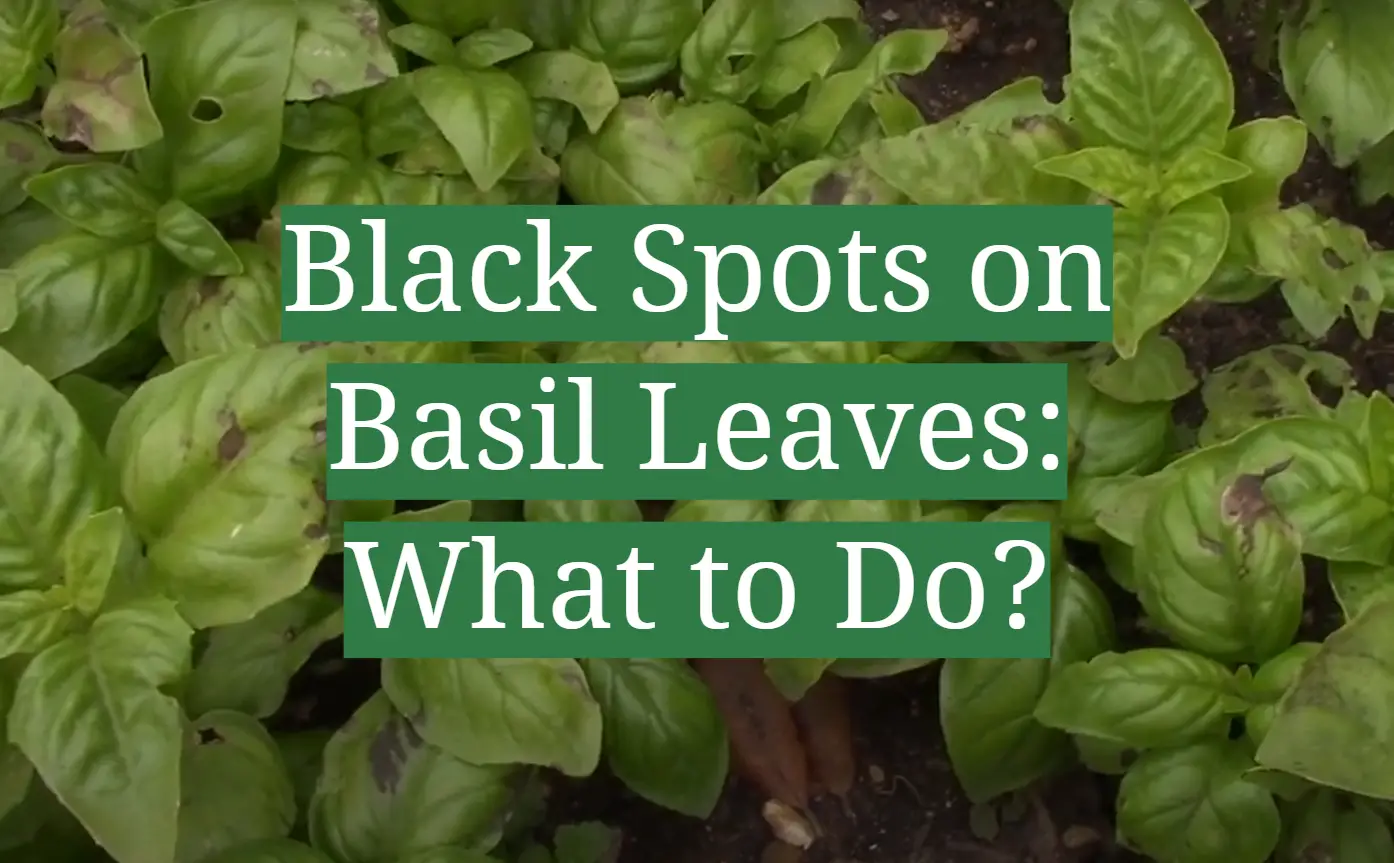

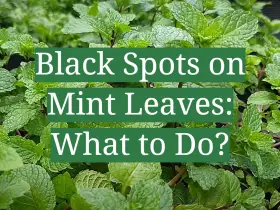
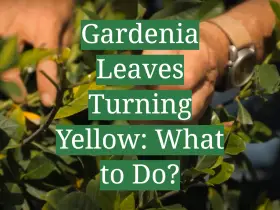

Leave a Reply
View Comments